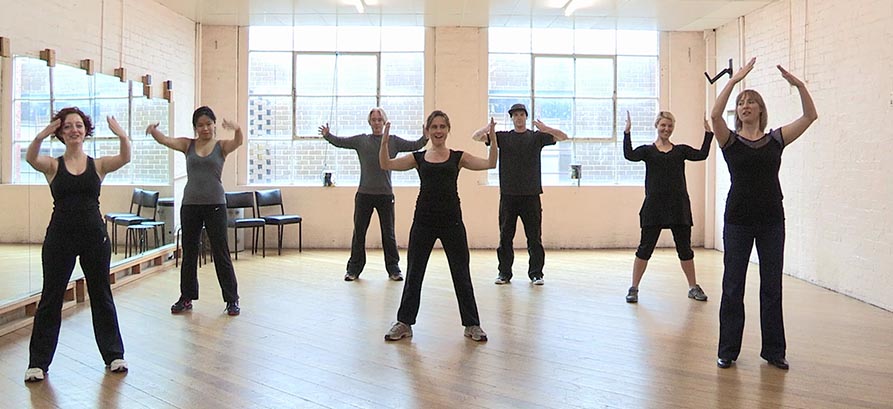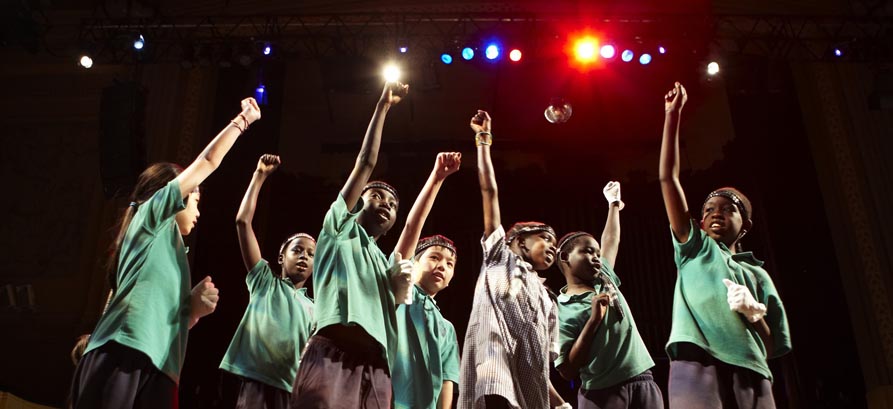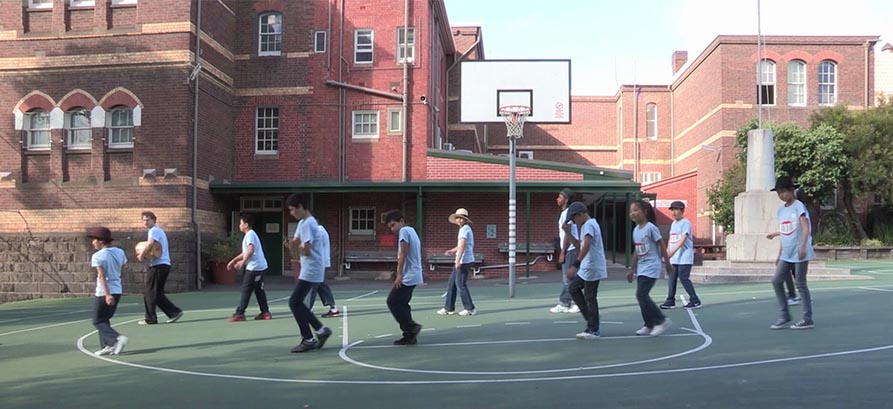
Dance your way to literacy – with a dash of science
By Zoe Barry, Teaching Artist
As a Teaching Artist with The Song Room, I encounter students from a diverse range of backgrounds. Many students are recent arrivals and have a language background other than English. This was the case in some Foundation and years 1 and 2 classes I worked with recently, with a significant group of children in each class having limited knowledge and confidence in English vocabulary and comprehension.
So how do you engage students facing challenges to their learning journeys?
The creative arts are a wonderful way to improve literacy and build confidence in students. Students find it fun and engaging, and it is also easy to tie the arts in with other learning areas. A helpful resource to use is ARTS:LIVE’s ‘Alphabet Dance’ activities to focus on Science. This course is a helpful, flexible resource to focus on literacy, and help students reflect on and articulate their learning.

Getting started
Sign in for the full set of resources including videos for student stimulation, activity sheets and teacher notes.
- Dance Your Socks Off: Learn the Alphabet Dance
- Dance Your Socks Off: Create an Alphabet Dance
Warming up
Warm up activities are really important for dance, to work safely physically and to engage the class as a whole in the process. Going around the circle, ask each student to create their own simple movement or gesture and get everyone to copy it. This encourages students to develop greater awareness of their bodies. Get them thinking about what they have been learning in their Science classes and how they could show that physically. Try playing drama games that encourage thinking about science – the Improvisation Starters course is a great place to find ideas.

How can you tie dance in with Science?
After showing The Alphabet Dance videos to students I find they immediately want to create their own moves. For these classes each move (for the first six letters of the alphabet) relates to what they are learning in Science.
The students came up with fantastic short movements including:
- mixing chemicals together
- volcanoes exploding
- cutting up food
- being safe when doing experiments
- balloons deflating
- boiling pasta
Once we had decided on moves for the letters A–F, we practised them as a class and in small groups.
Extending the activity
We developed this exploration of Science over the next five weeks in a range of ways:
- The students worked in small groups to choose words they could spell with their moves, and prepared a short performance of their word.
- The students performed all of their moves together as a class.
- The choreography led to further movement work using science as a starting point, and incorporating improvisation and mirroring.
- We broke down each alphabet move into a three-part tableau – before, during and after – to explore change, and how science can measure change.
- Each class wrote a song or rap about what they have learned in Science, added their choreography and worked with the other 1/2 classes to teach them the songs and moves.
- We performed the songs with tableaux and choreography at the school’s open day for Education Week.
Benefits
The Alphabet Dance resource helped engage all of the students in these classes by allowing them to learn kinaesthetically, express complex thoughts non-verbally, and share their learning with each other clearly. It assisted their literacy, and developed confidence in their ability to recall and articulate their learning, and to quickly develop performance material that celebrated their learning.
Why teachers loved the resource
- They could see how interested the students were in the video, and how easily it engaged all of the students, no matter what their level of English comprehension.
- It helped the students’ understanding of the alphabet and spelling.
- The teachers could feed this learning into their lessons.
- It nurtured student-led learning, and working in small groups.
- The students were able to articulate and share what they had been learning with their specialist Science teacher with their classroom teacher.
- The physicality of the resource enabled the students to build their confidence in expressing their ideas, which enabled them to then verbally share their thoughts about science, allowing them to write long, complex songs about their learning.
- The resource was a GREAT stimulus for learning – the one resource led to a five-week block of learning.
Why not give it a go with your class?
Everything you need to get started with this fun activity is in the teacher notes on the site.